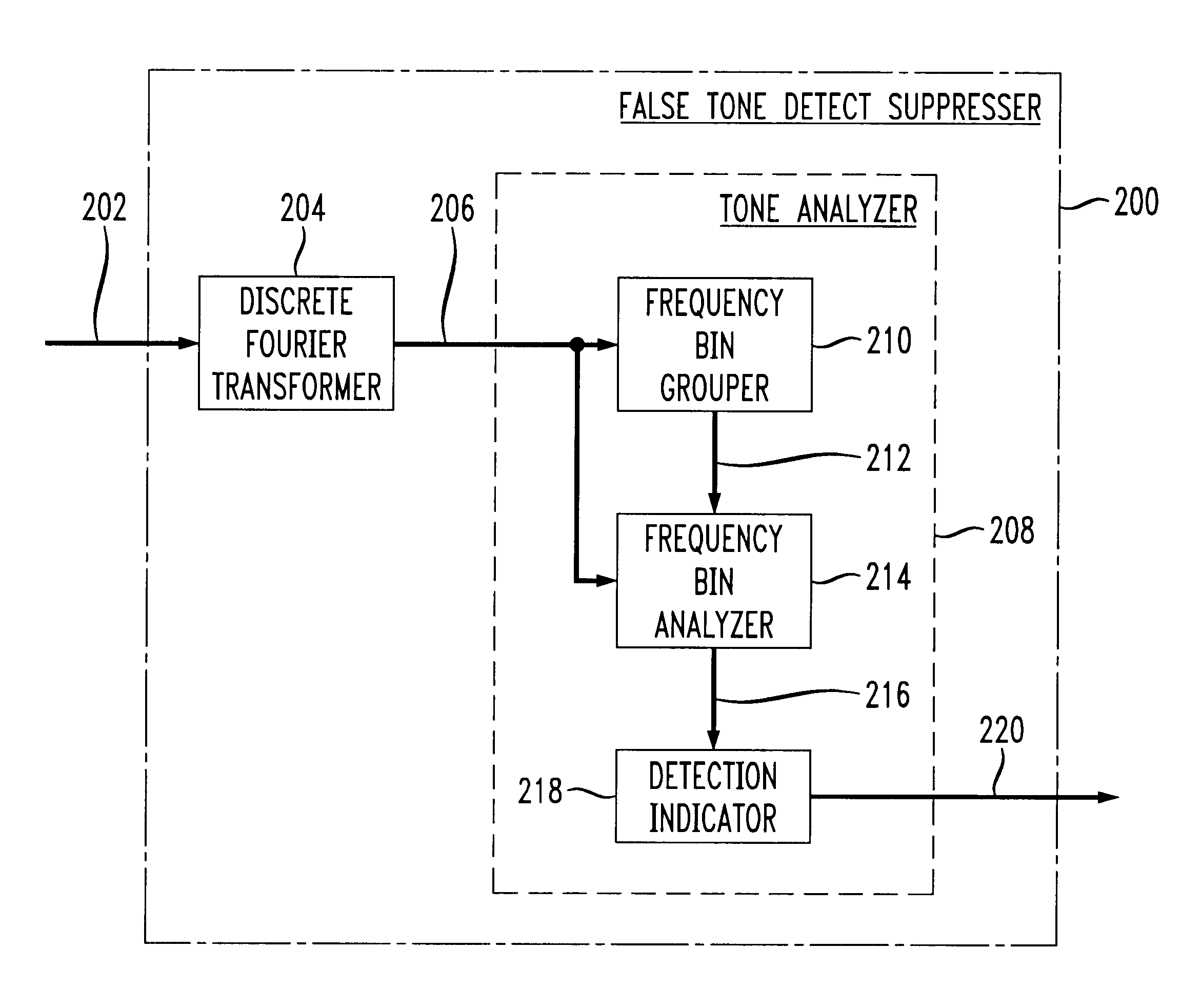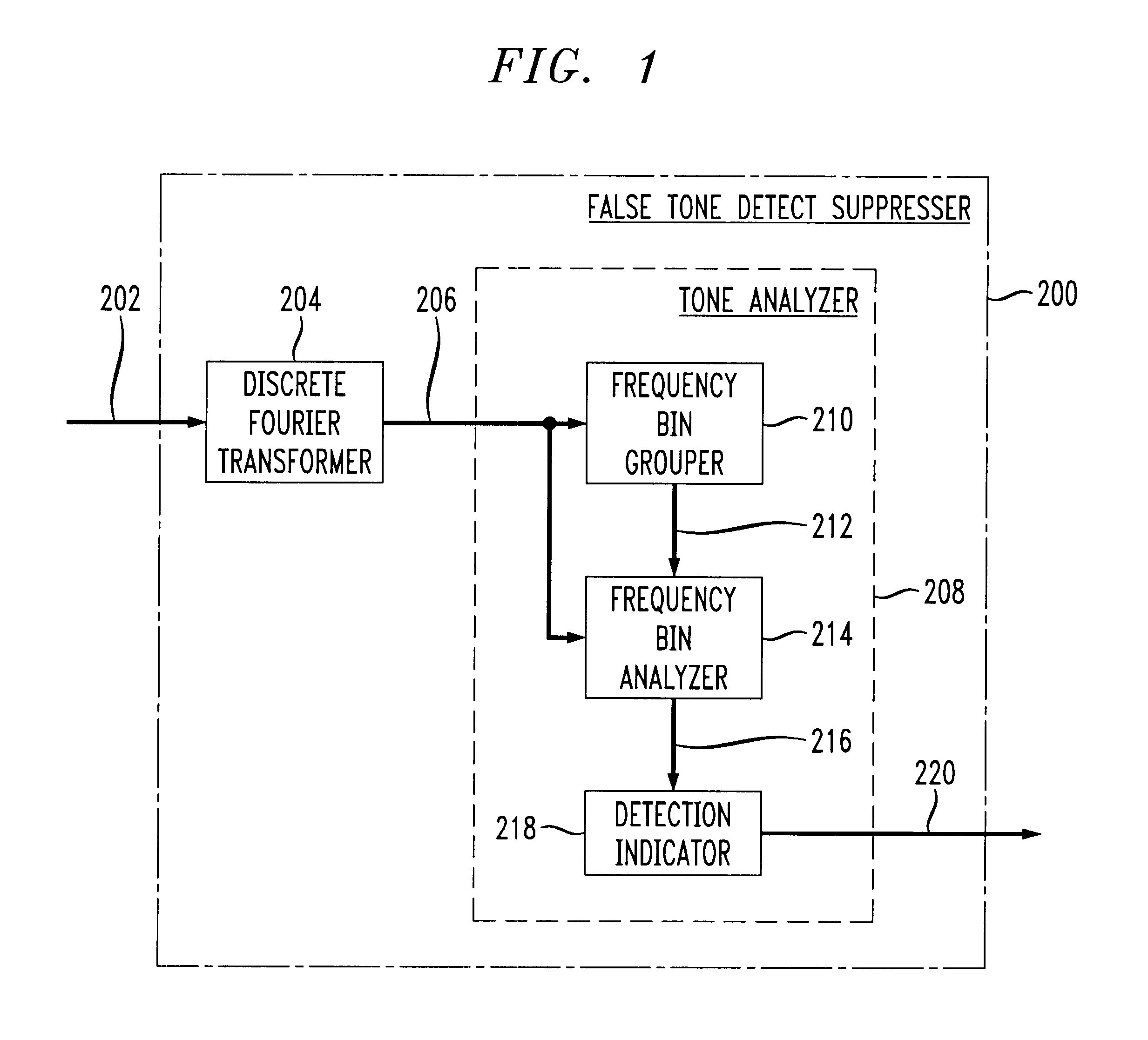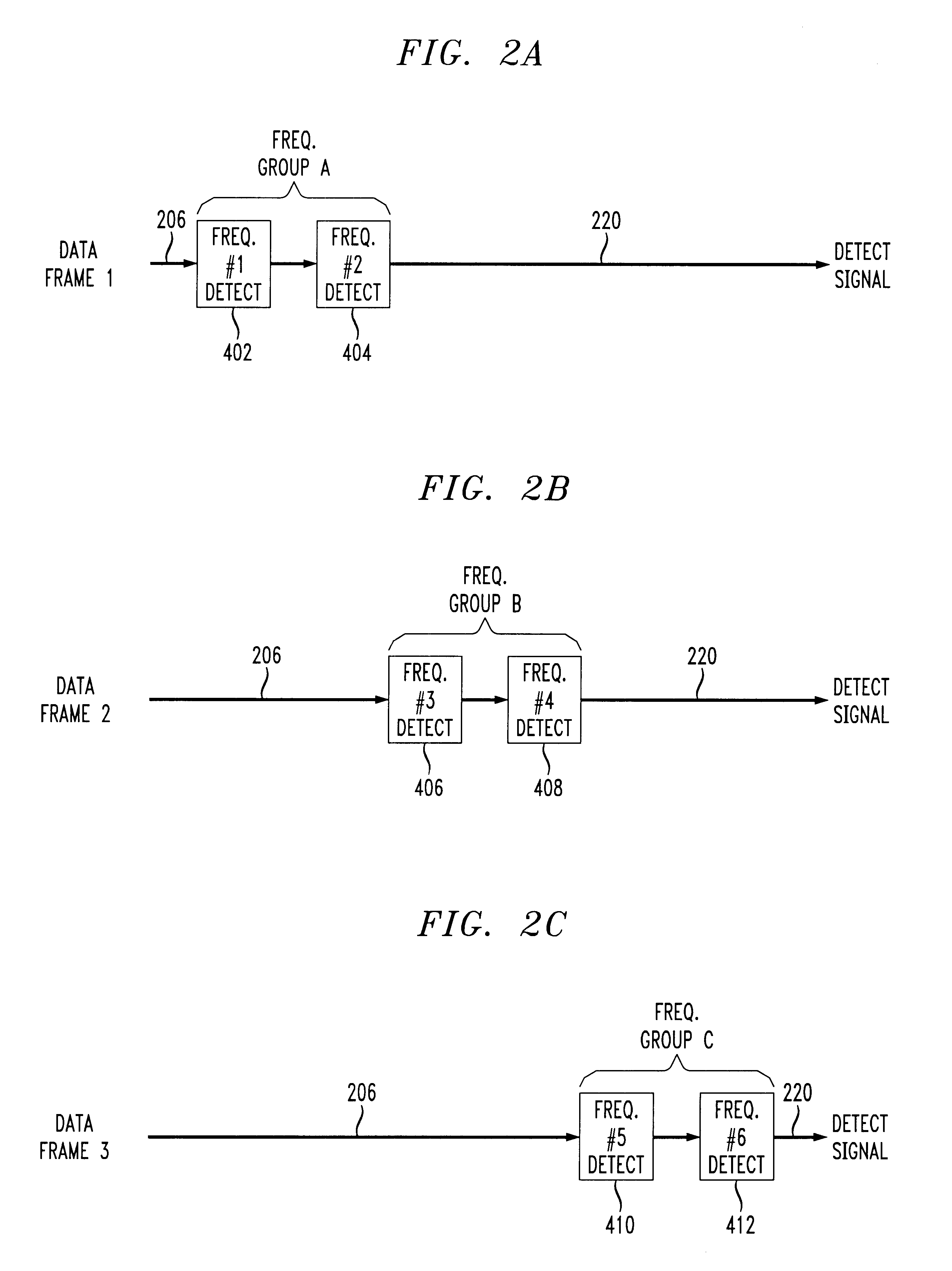False tone detect suppression using multiple frame sweeping harmonic analysis
a harmonic analysis and false tone technology, applied in the field of false tone detection suppression, can solve the problems of increasing the cost of practical caller id- and call waiting-capable cpe beyond acceptable levels, and unable to reliably detect the cpe alerting signal in conventional cpes
- Summary
- Abstract
- Description
- Claims
- Application Information
AI Technical Summary
Problems solved by technology
Method used
Image
Examples
Embodiment Construction
In accordance with the principles of the present invention, a sweeping harmonic analysis of a noise signal (e.g., voice on a telephone line) is performed in piecewise fashion over a plurality of data frames to indicate the presence of matching harmonic frequencies in a composite signal which might cause erroneous tone signal detection.
The present invention recognizes the performance versus cost limitations of current customer premise equipment (CPE), e.g., equipment capable of operation in a telephone system with combined call-waiting and caller identification (caller ID) services. It also recognizes the fact that speech harmonics (that is, the frequency components of speech including fundamental frequencies and the integral multiples) change little relative to the duration of CPE alerting or other tone signals.
In accordance with the principles of the present invention, a series of snapshots of particular frequencies (or groups of frequency `bins`) resulting from a discrete Fourier ...
PUM
 Login to View More
Login to View More Abstract
Description
Claims
Application Information
 Login to View More
Login to View More - R&D
- Intellectual Property
- Life Sciences
- Materials
- Tech Scout
- Unparalleled Data Quality
- Higher Quality Content
- 60% Fewer Hallucinations
Browse by: Latest US Patents, China's latest patents, Technical Efficacy Thesaurus, Application Domain, Technology Topic, Popular Technical Reports.
© 2025 PatSnap. All rights reserved.Legal|Privacy policy|Modern Slavery Act Transparency Statement|Sitemap|About US| Contact US: help@patsnap.com



